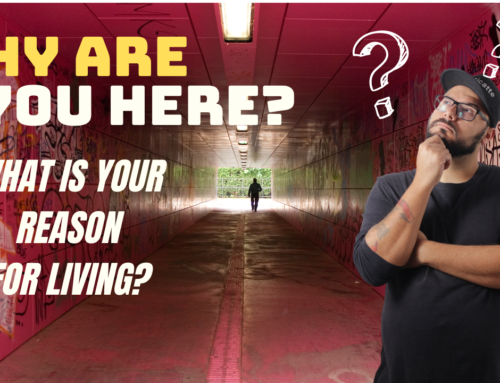Overcoming prejudices and biases
Researchers claim that biases and stereotypes are learned behaviors that seemly become automatic, unintentional, and deeply ingrained. Is there a solution to this destructive behavior? How do we become consciously aware of our biases?
We are continuing our look at God’s love for us and his plan (his mission) to bridge the gap between us and him.
His mission is to bring us back into a loving relationship with him. He wants us to become His disciples and members of his family.
Thus, He calls for us to respond to His love.
But our relationship with Him does not end with His call, for a call without action from the one being called has no value.
He calls for us today to be inclusive, not exclusive.
How can we practice inclusiveness?
Review our past and present videos at SabbathSchoolDaily.com or visit my YouTube Channel,
Sabbath School Daily by Dr. Brenda Ware Davis
Let Us Inviting God’s Presence:
Holy Father, we recognize that biases and stereotypes are unacceptable behavior for those professing to be your children. Help us avoid the intentional and unintentional practice of stereotyping or showing biases toward any group of people. In Jesus’ Name, Amen.
God’s Mission, My Mission
(Lesson 11)
Mission to the Unreached
Part 4: In Tyre and Sidon
Categorizing things is said to be a natural human unconscious response that places a barrier between us and them when it comes to categorizing people.
But how we categorize and see one another can be changed by simply learning to re-categorize how we see others. https://thebeautifultruth.org/
Jesus, while living on this earth, taught his disciples how to do just that.
At the time of Christ, there was a marked distinction between Jews and Gentiles and how they categorized one another.
Many students of the bible believe that Matthew wrote his book about Jesus, titled the Gospel of Mathew, specifically for a Jewish audience.
In contrast, they also believe that Mark wrote his book about Jesus, titled the Gospel of Mark, primarily for a Gentile or non-Jewish audience.
Knowing this is important because it helps us better understand the perspective on the different accounts of Jesus as recorded in the four Gospels, the first four books of the New Testament: Matthew, Mark, Luke, and John.
For instance, read Mathew 5:22-28 and Mark 7:24-30 account of the mother requesting Jesus to heal her daughter.
What do you see different in the two stories?
Matthew, using her race, describes the mother as a Canaanite.
Whereas Mark uses additional words to describe this mother.
He lets his audience know that she is a Greek, that is, she is a Gentile, a non-Jew.
Then, Mark provides more information about this woman. He reveals that she is by birth a Syro-Phoenician, indicating that she is a Syrian from the land of Phoenicia.
You see, the Jewish audience, to whom Matthew 15 is mostly directed, would view the Syro-Phoenician woman as a heathen and an evil person who worshiped false gods.
How did this bias come about?
It came from their historical experience with the Canaanites, who, by their evil practices and worship of idols, caused Israel to sin.
They caused Israel many problems.
Their evil practices had long been an obstacle to their people.
So, the Jews in Jesus’ day despised the Syro-Phoenicians.
Likewise, Jesus’ followers, his disciples, didn’t think highly of this woman’s faith, nor did they believe she could be considered God’s people or be a part of God’s kingdom!
On the other hand, The Gentile or non-Jewish audience, to whom Mark 7 was mostly directed, would have a different opinion of the Syro-Phoenician woman.
For the Gentiles had not had the same experience as the Jews with the Canaanites or Syro-Phoenicians.
So, Mark’s audience could identify with this woman.
Jesus had healed someone who was a part of them!
They could see the Syro-Phoenician woman as a beloved mother who cared about her daughter and wanted her child to be healed.
Thus, they expected Jesus to heal her, regardless of her ethnicity or national origin.
Interestingly the book The Desire of Ages says:
“Christ did not immediately reply to the woman’s request. He received this representative of a despised race as the Jews would have done. In this He designed that His disciples should be impressed with the cold and heartless manner in which the Jews would treat such a case, as evinced by His reception of the woman, and the compassionate manner in which He would have them deal with such distress, as manifested by His subsequent granting of her petition.”—Ellen G. White, The Desire of Ages, p. 400.
Jesus showed that he saw Syro-Phoenician woman no differently than those with a Jewish national origin.
He wanted the Jews to see themselves.
For both the Jews and non-Jews need a savior.
Therefore, John in 1 John 2:2 lets us know that we are all the same in God’s eyes.
2 And He Himself is the propitiation for our sins, and not for ours only but also for the whole world. (I John 2:2).
How, then, should we categorize those who may be of a different national origin, race, or ethnicity?
For starters, read Acts 10:9–16, 28, 34, 35. Then, continue to the next segment of this video, Part 5: Send Her Away.
God’s Mission, My Mission
(Lesson 10)
Mission to the Unreached
Part 5: Send Her Away!
Many people in the cities are longing for hope.
In Jesus’ day, biases and stereotypes stopped God’s people from sharing hope with the people in cities such as Tyre and Sidon?
It is the same today! Pride, Nationalism, and prejudice blind the people of God and keep them from using the opportunities that are before them.
The people of Israel failed to recognize that there were people within their reach who longed for the hope foretold in the prophecies about a coming savior. (Split)
They were so blinded that they couldn’t see how much the people near them needed the hope of Jesus’ first coming.
Today, Jesus wants us to share the hope of his Second Coming with everyone, including those living in the crowded cities.
They, too, need the promise of the “blessed hope” spoken of in Titus 2:13, which says:
13 looking for the blessed hope and glorious appearance of our great God and Savior Jesus Christ, (Titus 2:13)
Jesus was not selective in reaching out to people based on nationality and race, ethnicity, culture, or even religion, and neither should we be.
When you read Acts 10:9–16, 28, 34, 35. What did you learn regarding race relations?
We find that Peter, one of Jesus’ closest disciples, had a problem with how he categorized people that needed to be corrected.
So, one day, while waiting for lunch, Peter went to the rooftop to sleep. While on the rooftop, God gave him a vision or dream.
In this vision, Peter saw a tablecloth filled with animals and birds that were considered unclean.
Three times in this vision, God told Peter to get up, kill, and eat these animals.
But Peter refused because the animals were deemed unclean by God.
In other words, they were unfit to eat.
Was God insisting that Peter eat these unclean animals? No!
God used these visions to show Peter that his heart was filled with religious pride, bigotry, and dislike for the Gentiles (the non-Jews).
Peter learned an important Bible truth that day.
In Acts 10:34 and 35, we find that eventually, Peter understood this reality. For, he says,
34 “In truth I perceive that God shows no partiality.
35 But in every nation whoever fears Him and works righteousness is accepted by Him. (Acts 10:34, 35).
With this in mind, let’s go back to Tyre and Sidon.
Reflect on Matthew 15:22–28 and Mark 7:24–30, where the Syro-Phoenicians mother made her solemn appeal for Jesus to heal her daughter. (Split)
How does Peter’s words in Acts 10:34, 35 align with Jesus’ response to this mother who was hated by the Jews simply because of her national origin?
Look again at Jesus and His conversation with the mother. Like Peter’s vision on the rooftop, what lessons did Jesus’s followers; his disciples, learn from their field trip to Tyre and Sidon?
This should be a lesson to all who profession the love of Jesus.
God loves everyone, regardless of their national origin, race, or background.
Thus, our hand of love should extend to all, including those living in crowded cities and those steeped in paganism.
What prejudices and biases prevent us from extending our hand of love to those living in crowded cities who may have ideologies and beliefs that differ from ours?
Better yet, how much more can we do the work of Jesus in which he ministered to all people?
How important is it for us to empty our hearts of hatred, biases, bigotry, prejudices, and spiritual pride?
Though how we feel may be deeply ingrained, there is help!
To accomplish this, we must, with sincere hearts, ask God to change our minds on how we categorize people.
With the help of Jesus and the working of the Holy Spirit, as we submit to his calling, our hearts will be changed.
Jesus, with a loving and patient heart, taught his disciples that it was his purpose for them to be inclusive rather than exclusive.
He taught them how to reorder their thinking about how they saw those who were different from them.
Perhaps their beliefs were different, or maybe they were of a different culture, race, or ethnicity.
But God’s saving grace is for all humanity.
He sent his son to die for the sins of everyone, everywhere, who would accept him as their savior.
This includes those in urban areas and crowded cities.
We cannot do this on our own, but the Holy Spirit will help us.
We must overcome our prejudices and biases so that we can help fulfill God’s mission in bridging the gap between him and us.
Notice how Paul responded to Peter in Galatians 2:11-13
Galatians 2:11-13
11 Now when Peter had come to Antioch, I withstood him to his face, because he was to be blamed;
12 for before certain men came from James, he would eat with the Gentiles; but when they came, he withdrew and separated himself, fearing those who were of the circumcision.
13 And the rest of the Jews also played the hypocrite with him, so that even Barnabas was carried away with their hypocrisy. (Galatians 2:11–13)
Thus, as Jesus with his disciples in Tyre and Sidon and Paul with Peter among the Gentiles, we must stand against bigotry, racism, and prejudice.
We must learn to re-categorize how we look at people. How do we do this?
Read Matthew 8:10, 13; Matthew 9:2; Matthew 20:29–34; Mark 2:5; Mark 10:46–52; and Luke 18:35–43. and then Continue to the next segment of this video, part 6, Faith on the Earth?
God’s Mission, My Mission
(Lesson 11)
Mission to the Unreached
Part 6: Faith on the Earth?
After one of his parables, In Luke 18:8, Jesus asks a profound question:
8 However, when the Son of Man comes, will He find faith on the earth?” (Luke 18:8).
When Jesus spoke of faith, what was he looking for?
As followers of Christ, it is important that we entertain this question.
What is Jesus looking for?
Read Luke 18:1-8 In it, Jesus tells a parable about a woman’s persistence to obtain justice.
It shows how important it is for us to pray and not give up.
It is designed to teach us to be persistent and have faith and trust in him even when times are hard and everything around us looks hopeless.
Pause for a moment and read the following verses: Matthew 8:10, 13; Matthew 9:2; Matthew 20:29–34; Mark 2:5; Mark 10:46–52; and Luke 18:35–43.
Who does Jesus describe as having faith?
Notice that Jesus’ list included people with faith in regions or cities considered pagan or heathen.
For instance, Although the people of Capernaum were considered pagan by the Jews.
Jesus refers to several people with faith in the Land of Capernaum.
In Matthew 8:10 and 13.
Jesus highlights the great faith of a converted pagan Roman centurion.
And in a previous study, we talked about Matthew 9:2 and Mark 2:5, which told of the faith-filled friends of a paralyzed man who ripped open a roof to get their friend to Jesus for healing.
Mark 10:46-52 tells of a blind beggar called Bartimaeus.
After Jesus heals him, his faith shines bright in the city of Jericho.
Of course, we would expect great faith among God’s professed people.
But sadly, though they professed to be the people of God, there was little faith and sometimes outright unbelief, even in Jesus’ hometown of Nazareth.
Their lack of faith limited the blessings God had for them.
Jesus repeatedly reproved the people of Israel for their lack of faith.
Matthew 6:30, Matthew 8:26; Matthew 14:31; and Matthew 16:8 reveal that Jesus among his disciples often talked of Israel’s lack of faith, saying “O ye [thou] of little faith!”.
And in Matthew 17:17, Jesus proclaims them as a “faithless and perverse generation.”
The main point here is that faith can be found in unexpected places.
The place where we expect to find faith, we may not find it; and in places where we do not expect to find it, we may find it.
Faith can be found mixed in the hearts of people everywhere, including urban areas steeped in paganism and among people of different cultures and different religions that do not profess Christianity.
That’s why we must learn to re-categorize so we can put aside any prejudices, biases, or stereotypes we may have.
Like Jesus, we must enter urban and highly populated areas to seek and find the lost and introduce them to their savior, Jesus Christ.
Jesus died for all people!
He has people waiting for us to help them.
When presented with truth as it is in the Bible, they will respond with faith in Jesus, the one who died to save everyone.
Notice what it says in Advent Review and Sabbath Herald
“God has jewels in all the churches, and it is not for us to make sweeping denunciation of the professed religious world, but in humility and love, present to all the truth as it is in Jesus.—Ellen G. White, Advent Review and Sabbath Herald, January 17, 1893.
So, here is your challenge:
Challenge #1: Pray for more faith to share your love for Jesus with all people for whom God opens your door of opportunity.
For those up to a greater challenge:
Challenge #2: How did you come to know Jesus? Make a list of three spiritual blessings that Jesus gave you in your personal life. Share your list with someone you know who does not know Jesus.
————————————————
Share your results in the comment section below.
Thank you for watching this video. To be notified when my next video comes out, Subscribe to my YouTube Channel, Sabbath School Daily, by Dr. Brenda Ware Davis.
You also may obtain the study guide for this series at Sabbath.School or ssnet.org
If you enjoyed this video and want to use it to help fulfill God’s mission, click Like…..then…..Share.
Thank you for Liking, Sharing, and Subscribing.
Hebron Seventh-day Adventist Church
7902 Wheatly Street
Houston, TX 77088
Watch Past and Present Lessons at SabbathSchoolDaily.com



